#constructivist architecture
Explore tagged Tumblr posts
Text

Pomnik Bartolomeo Colleoniego
Szczecin, Poland
#Poland#35mm#film photography#analogue#original photography#travel diary#photographers on tumblr#travel photography#eastern europe#statue#soviet architecture#soviet union#post soviet#khrushchyovka#Constructivist architecture#brutalism#neoclassical#neoclassicism
16 notes
·
View notes
Text
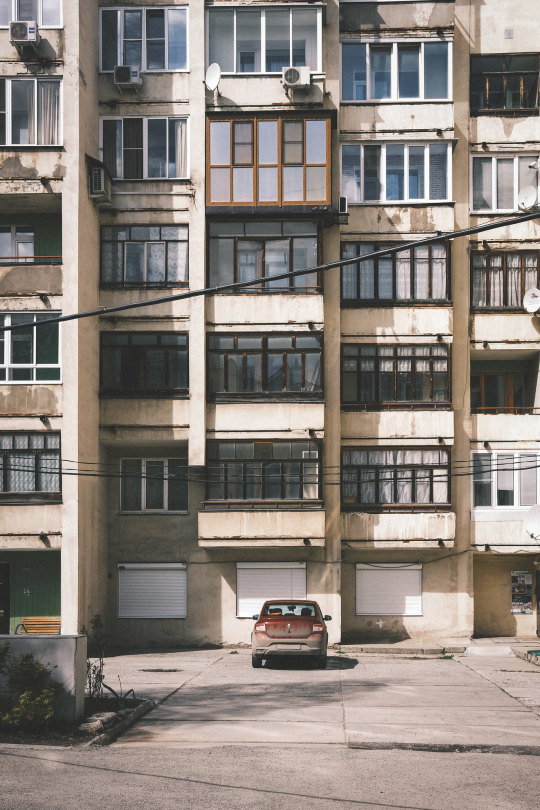


From the 1930s (2) (3) by chistyakov.ivan
2 notes
·
View notes
Text
All of you are getting skinned

#when did this happen??#I had about thirty of you for two/three years and now theres a hundred??? How did you all sneak your way in here??#i saw it and had to make the 101 dalmatians joke#i couldnt not#Thank you to all you weird sick freaks who followed me#I will only get worse#wait until i start talking about the inherent eroticism of constructivist architecture just wait#Soup speaks the bullshit
42 notes
·
View notes
Text
The first thing you’ll notice — perhaps helped by a translation app, as tourists and monolingual English speakers are not among Familjny’s usual clientele — is that the food is outrageously cheap. Once you’ve worked out what dishes you want, you queue up to a little niche. You ask here for what you want, and you’ll be given a bit of paper. You take this to a larger niche, from which you can see the kitchen, and you give it to a uniformed staff member, who would usually be middle-aged or older. They will dollop the particular parts of your meal onto your plate. Then you sit down, and you eat it, and when you’ve finished, you put the plate and your cutlery onto a rack — there is nothing so servile as waiting staff. There are some drawbacks to this system, to be sure. I have only once or twice been in a milk bar that had a toilet, and because at lunchtime especially there are always a lot of people queueing, you are not encouraged to linger. You eat, and then you go home or back to work — but you’ll have been able to have a decent three-course meal of soup, a main course, and a slice of cake for the equivalent of, at the very most, £5, in a country where the cost of living is almost comparable to Britain’s.
[...]
In Poland, the milk bar idea has been dated by some to the late nineteenth century, when the bulk of Poland, including Warsaw, was under Tsarist Russian occupation. Milk bars would offer locally produced food to benefit Polish farmers, and there would be no alcohol to cloud the minds of Polish workers, and also, importantly, little meat, which would make the food both cheaper and healthier. But nearly every milk bar in Poland was opened between 1945 and 1989, becoming the local example of a subgenre of cheap communal eating facilities built and encouraged by state socialist governments; what distinguishes it today is the fact that it still endures, for reasons which are complicated and surprising. Communal eating was regarded as being of crucial importance by Bolshevik thinkers from the start. Partly, this was a consequence of their pioneering feminism. Both for Lenin and for explicitly liberationist thinkers like Alexandra Kollontai, one of the central tasks of the revolutionary government that seized power in October 1917 was to free working-class women from ‘kitchen slavery’, as exemplified in the St Petersburg’s textile industry, which saw women work in factories all day and then go home and cook (and clean) for their menfolk. Early plans were highly ambitious, and they were integrated with avant-garde architecture and urban design; a few remnants of this programme survive in the larger cities of Russia, and Ukraine in particular. When researching a book on Soviet architecture in the 2010s, I went looking for a few of these, and the results were often sad to behold. In St Petersburg — then Leningrad — at the end of the 1920s, a team of architects, some of whom had worked with Vladimir Tatlin on his famous unbuilt twisting tower in tribute to the Third International, were charged with designing communal kitchens in the factory districts of the city. All three of them survive, but they have been turned into dodgy nightclubs, cheap malls, or worse: the finest of the group, a fabulous, dynamic, futuristic building, in the Narvskaya Zastava district, had been subdivided into little units by, among others, McDonalds. In Moscow meanwhile, enormous Constructivist bakeries were built around the city. One of the largest of them, Bakery Plant No. 5, was turned into a museum of Constructivism in 2022; the year, that is, of Russia’s full-scale invasion of Ukraine, a vainglorious nationalist slaughter that would have horrified the socialist modernists behind these buildings. In the 1920s, housing was sometimes built in such a way as to encourage its inhabitants to eat collectively. In Moscow’s experimental Narkomfin Communal House, duplex apartments were connected by a walkway to a restaurant, a library, a nursery, and a gym, with a roof garden on top; inside the flats, kitchens were either tiny or, in the ‘fully collectivised’ apartments, absent entirely, with the assumption that you could always eat in, or take your food from, the communal restaurant. For its Constructivist architect Moisei Ginzburg, this would liberate women residents entirely from the assumption — unavoidable in the early twentieth century — that they would be cooking the dinner. But in the Stalin era, Soviet food culture became much more hierarchical. These dreams of vast avant-garde dining halls serviced by streamlined, automated processes and administered by happy class-conscious workers were replaced with, at the top, a series of luxury restaurants for the nomenklatura; at the bottom, factory canteens; and, in between, the stolovaya — a network of public dining halls across the country, expanded especially in the more egalitarian Khrushchev era, during which period modernist glass box cafes also appeared in the larger urban centres, as a return to the 1920s dreams of automated communal luxury.
17 February 2025
102 notes
·
View notes
Text







Venice in the art of Alexandra Exter (1882-1949)
Carnival in Venice (oil on canvas) 1930s
Carnival Procession (oil on canvas)
Masked Figures by the Banks of a Venetian Canal (oil on canvas)
Venetian Masks (oil on panel)
Pulcinella (gouache on paper) late 1920s-30s
Venice (oil and sand on canvas) 1925
Venice, 1915
"Aleksandra Aleksandrovna Ekster, also known as Alexandra Exter, was a Russian and French painter and designer. As a young woman, her studio in Kiev attracted all the city's creative luminaries, and she became a figure of the Paris salons, mixing with Picasso, Braque and others. She is identified with the Russian/Ukrainian avant-garde, as a Cubo-futurist, Constructivist, and influencer of the Art Deco movement. She was the teacher of several School of Paris artists such as Abraham Mintchine, Isaac Frenkel Frenel and the film directors Grigori Kozintsev, Sergei Yutkevich among others." [x]
"Exter painted views of Florence, Genoa and Rome, but ‘most insistent and frequent were images of Venice. The city emerged in various forms: via the outlines of its buildings, in the ‘witchcraft of water’. In glimmering echoes of Renaissance painting, in costumes and masks and its carnivals’.
"Exter’s characteristic use of the bridge as a stage platform, seen most clearly in Carnival in Venice, is a legacy of her time as Tairov’s chief designer [Alexander Tairrov, director of Moscow's Kamerny Theatre]; the director believed in breaking up the flatness of the stage floor which the artist achieved for him by introducing arches, steps and mirrors. Even in her easel work, the emphasis is at all times on theatricality. Bridges are used as proscenium arches, the architecture creates a stage-like space in which to arrange her cast."
"For all her modernity, references to Venetian art of the past abound in these paintings. The masked figures are influenced by the Venetian artist Pietro Longhi, to whom Exter dedicated a series of works around this time. The incredible blues used in both Carnival Procession and Masked Figures by the Banks of a Venetian Canal are a direct reference to Titian, who was famed for his use of ultramarine, the pigment most associated with Venice’s history as the principal trading port with the East." [x]
"Exter had long since abandoned the Cubist syntax by 1925 but her sense of colour remained together with a strong conviction, shared with Léger, that a work of art should elicit a feeling of mathematical order. In its graceful interaction of fragmented planes and oscillation between emerging and receding elements, Venice (1925) echoes the more precise qualities that also appear in Léger's work at this time, both artists occupied with the continuous modulation of surfaces and the 'melody of construction' that Le Corbusier was still advocating in the 1930s. But while Exter subscribed to Léger's theory that 'a painting in its beauty must be equal to a beautiful industrial production', she never fully embraced the aesthetics of the machine and rejecting the common opposition between ancient and modern, her work often retains a classical edge - for example in these trefoil windows, arches and vaults. Human figures, which had been nearly absent from her Cubo-futurist paintings, also return in other works from this period."
"She was undoubtedly aware of the concept of 'defamiliarisation', a term first coined by the influential literary critic Viktor Shklovsky in 1917:
'The purpose of art is to impart the sensation of things as they are perceived and not as they are known. The technique of art is to make objects 'unfamiliar,' to make forms difficult to increase the difficulty and length of perception because the process of perception is an aesthetic end in itself and must be prolonged.'
An instance of this device is discernable in the present tight formation of the oars, seen from above. Like Braque and Picasso, Exter incorporates sand into certain areas of pigment to enhance the differentiation of surfaces, a technique also used to 'increase the length of perception'. The occasional lack of overlap between the boundaries of the textured surfaces and colour planes strengthens the paradoxical combination of tangible presence and elusive abstraction that makes Venice such a powerful work."
"Venetian subjects occur in Exter's work as early as 1915. A gigantic panneau of the city was one of the final works she produced in the Soviet Union and exhibited in the 1924 Venice Biennale." [x]
"The specific theme of the Commedia dell’Arte first appeared in Exter’s work in 1926 when the Danish film director Urban Gad approached her to design the sets and marionettes for a film which was to tell the story of Pulcinella and Colombina, transposing them from the Venice of Carlo Goldoni to contemporary New York. Pulcinella most likely relates to the artist’s subsequent experimentations on the theme of the Commedia dell’Arte. Pulcinella, who came to be known as Punch in England, is one of the classical characters of the Neapolitan puppetry. Typically depicted wearing a pointed hat and a mask, Pulcinella is an opportunist who always sides with the winner in any situation and fears no consequences." [x]
56 notes
·
View notes
Text
wip weds
tagged by the lovely @red5tars and @3amfanfiction, and previously by @soapcloth and @stellewriites (thank you 🩷 - sorry, i wasn't very motivated these past two/three weeks!)
Open tags for anyone!
...You heard it as you stood on the damp, stony trail purporting to be a road leading to the bed and breakfast booked for the next week. A traditional two-story karseani– the upper floor for living quarters, whilst the ground floor held livestock. You'd heard the grunting of pigs as you hiked up, further and further, until you were but an infinitesimal smudge on the wind-bent landscape. You'd smelled them too, that musty-sour scent of the barnyard, and you hoped that he was telling the truth – your host, that is– that he used the ground floor only for storage. Mechanics projects, he'd typed. Nothing that should disturb you.
The map rattled in your hands, tugged by a vicious, greedy gale. You fought hard to keep ahold of it, wincing as the wind shrieked and the paper shuddered. A loud, piercing noise, some great ghoulish wail, pricked at your sensitive ears. Barotrauma. A painful blockage, air pressure, that ruined an otherwise lovely flight. The second leg of the journey, post-transfer in Istanbul, and seventeen hours total travel time, but you made it. Kastovia. The first stop on your ex-Soviet sight-seeing stretch. A pilgrimage through medieval spires, stark constructivist architecture, and the raw beauty of the Caucasus Mountains...
#yeah that's something i suppose#gonna be my first time writing omegaverse too so ywah fuck knows how it'll go#let's see how long this takes#báirseach writes#báirseach rambles#nikoli#nikolai/reader#wip weds
34 notes
·
View notes
Text

I booked a ticket to see the Narkomfin building!!!
Built in 1928-1930, it's one of the symbols of Soviet constructivist architecture. Architects who designed it (Moisei Ginzburg and Ignaty Milinis) called it a "housing machine": along with living quarters it had a communal building with a canteen, laundry, a nursery, a library and a gym.
The building was restored in 2020 by Alexei Ginzburg (grandson of the architect) and it's supposed to have been done in a way that preserved the original design. I can't wait to see it!
Thanks again to everyone for the donations!
81 notes
·
View notes
Text
Ok, so I'm trying to picture the different architectural styles in every canonic Cybertronian city, and I think that Tarn would be predominantly brutalist(which is my favorite). But Structuralism and Metabolism also don't look bad... aaah
Now I'm trying to picture how Kaon would look like, maybe something like ancient Rome or Naples, but gloomy and more hostile and rusty. For some reason, I also imagine it covered in punk-looking or constructivist murals (idk if I'm making sense).
Vos: maybe eco-brutalist/solar-punk but with floating buildings. Mh - maybe Deconstructivism? Expressionism??? Idk I gotta choose at some point.
Iacon: art deco? Neoclassical but futuristic, something that screams, "We're rich and you're not," but also sophisticated
The other cities are still too vague in my mind for me to decide, but if someone wants to jump on this weird rumble-y architectural headcanon train of thoughts, be my guest!!!
#the fun thing is that there are a fuckton of cities and an entire planet to imagine#i love worldbuilding#please worldbuild with me!!!!!#also I love imagining how art and culture would change from city-tate to city-state#Kaon is punk and you can't change my mind#vos is like Cybertronian silicon valley to me#now the cityformers are even better to image but that's a rambling for another time#steel rambles#world building#architectureal headcanons#transformers#maccadam#possible things that are gonna be inportant in one of my fanfictions???#if I could I would write fictional encyclopedias instead of narrative... but the brain worms
30 notes
·
View notes
Text
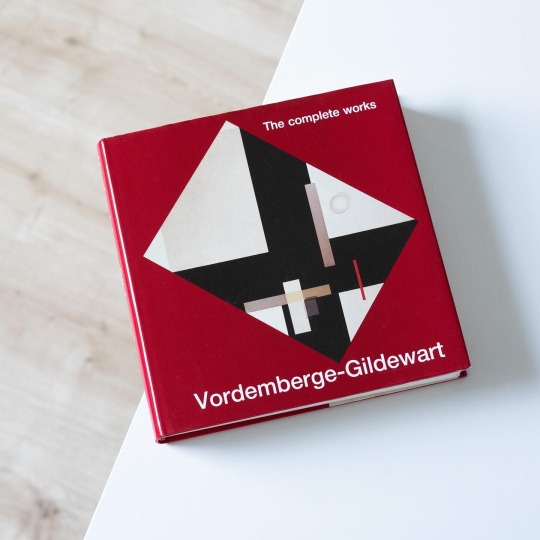
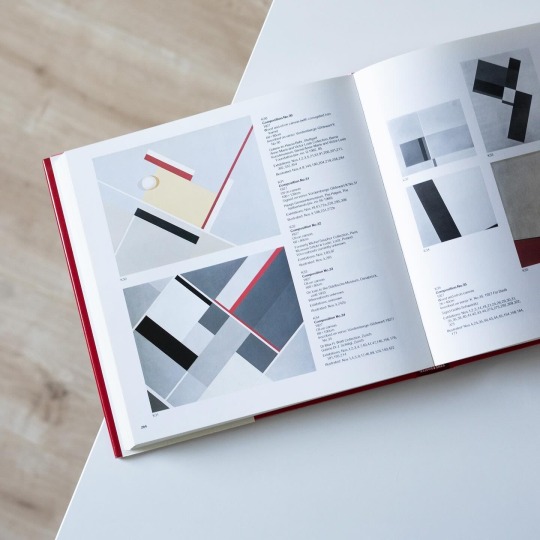
A key protagonist of constructivist art in Germany was Friedrich Vordemberge-Gildewart (1899-1962), a multitalented painter, sculptor and graphic artist and, interestingly, one of the few German members of the Dutch De Stijl group. Vordemberge, born in the town of Osnabrück in Lower-Saxony, in 1919 moved to Hannover, then and later the unofficial capital of abstract art in Germany, to study architecture, a study he was never to complete. He quickly got in contact with the likes of Hans Arp and Kurt Schwitters and in 1927 was one of the founding members of „die abstrakten hannover“, a circle of artists including Schwitters, Carl Buchheister and Rudolf Jahns. In the years following Vordemberge developed a very consequential abstract idiom revolving around basic geometric forms, a formal vocabulary he also occasionally translated into reliefs, typography and stage designs. Being avant-garde Vordemberge after 1933 fell through with the NS regime and was marked „degenerate artist“, a stigma that led to his emigration to Amsterdam in 1938. Nonetheless VG continued to be present in both solo and group exhibitions internationally. After the war Vordemberge and his wife received the Dutch citizenship and in 1952 he started teaching at HfG Ulm as head of the visual communication department.
A wonderful way to follow the artistic development and career of the artist is the old but gold volume “Vordemberge-Gildewart – The Complete Works”, edited by Dietrich Helms and published by Prestel in 1990: not only does it included all of the artist’s known works including photoworks and lithographs but it also ventures out into his architectural and commercial works that are addressed in two of the eight essays included in the catalogue. A complete exhibition roster and a thorough bibliography round out this still singular publication on what is one of German constructivism’s most significant artists.
#friedrich vordemberger-gildewart#catalogue raisonne#monograph#art book#vintage book#constructivism#modern art#de stijl#book
21 notes
·
View notes
Text
3. "Gesamtkunstwerk"(total work of art) in 20th century concerts.
"Gesamtkunstwerk" is a term coined by German Composer and theatre director named Richard Wagner in 1849. Gesamtkunstwerk is german word which translated to "total work of art" (Grigoriadou, 2013). It is a creative fusion of art, music, theory, philosophy and even technology to create a complete experience for the viewer or the audience.
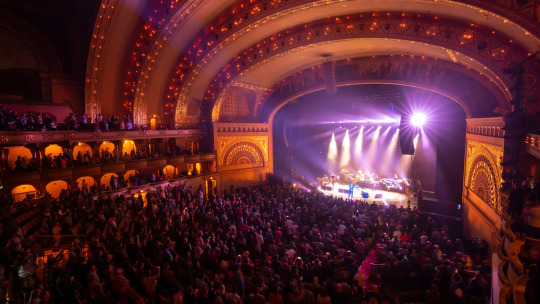
Modern day stage drama and auditorium (Chicago Auditorium Theatre)
Wagner combined the opera and drama to create a musical drama which were performed in the Auditoriums. (Pederson, 2016). Here the way in which the auditorium were built, the performances of actors and the orchestral music under the stage which in turn avoids any distraction was seen as a complete work of art at that time.
As time went by, new technologies were developed, introducing new forms of entertainment. We see the emergence of Cinema halls and motion pictures. Where audience could watch a story that is recorded in a reel and projected on a screen. Initially these films did not have sound or color. But as technology grew, so did the the realism and the level of engagement that "Gesamtkunstwerk" of the time provided. There was a gradual evolution of films with the addition of Sound , color as well as the experience of the third dimension for the viewers which we call 3D or stereoscope today.
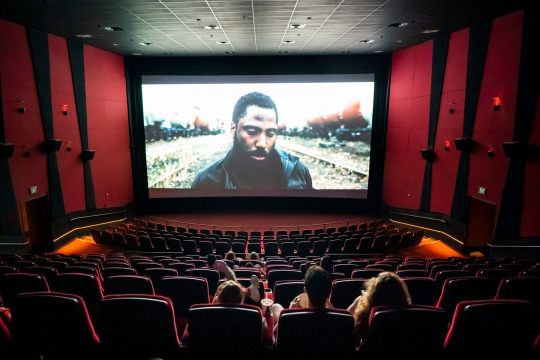
Modern day Stereoscopic Cinema Hall (2020)
It did not stop there it continued to explore the possibilities of involving more of our senses such as smell, touch, rain, wind and vibrations which was termed as 4DX Cinema. (Wilson. S, 2021)
youtube
4DX cinema demonstration by Cineworld Cinema (2022)
In the year 2023, Los Angeles had a new venue open for concerts. However, it was no ordinary concert venue. It was and still is what i consider the most recent form of "Gesamtkunstwerk". The Venue is called "The Sphere". It is a technological, architectural and innovational wonder. "The Sphere" is an auditorium which is spherically build as suggested by its name. As an audience when you enter the auditorium you are transferred into a futuristic world with skin of the structure covered with LEDs that project dynamic digital imagery.(RIBA Journals, 2025 ) Its a venue for electronic music concert where the artists play music with the robotics playing a few instruments while the whole venue projects mesmerizing abstract, futuristic or affective animations which look real and interact with the crowd in subtle ways. (RIBA Journals, 2025)
youtube
Concert performed by Anyma in "The Sphere - Los Angeles" 2024
youtube
Concert performed by Anyma in "The Sphere - Los Angeles" 2024
Combining animation, architecture, latest technology, lights, music, art and performance, "The Sphere" fits the definition of Richard Wagner's "Gesamtkunstwerk" and can be called a total work of art of the recent time. However, it is not the last version of "Gesamtkunstwerk" as it only paves a path for the future for more engaging works of art to immerge. "The Sphere" is also an excellent example of how revolutionary technology can be used positively with human creativity to reach new heights.
Bibliography:
Grigoriadou, E.T., 2013. Exploring the Gesamtkunstwerk Concept in the Design of the Theatrical Spatial Experience. A Constructivist Approach. In Infusing Research and Knowledge in South-East Europe, 8th Annual South-East European Doctoral Student Conference, STEERC.
Pederson, S. 2016. CHAPTER 2 From Gesamtkunstwerk to Music Drama. In: Imhoof, D., Menninger, M. and Steinhoff, A. ed. The Total Work of Art: Foundations, Articulations, Inspirations. New York, Oxford: Berghahn Books, pp. 39-55. https://doi.org/10.1515/9781785331855-007
Wilson, S. (2021) 4DX cinema in Cineworld: Everything you need to know, 4DX cinema in Cineworld | Cineworld cinemas. Available at: https://www.cineworld.co.uk/static/en/uk/blog/4dx-cinema-in-cineworld-everything-you-need-to-know (Accessed: 04 January 2025).
McNeil, R. (2020) Home, Chicago Film Scene. Available at: https://chicagofilmscene.com/the-current-state-of-movie-theatres-as-i-see-it/ (Accessed: 04 January 2025).
RIBA Journals. (2025) Look at what you can’t have now: The intense reality of the Las Vegas Sphere, RIBAJ. Available at: https://www.ribaj.com/buildings/las-vegas-sphere (Accessed: 04 January 2025).
Galvez, T. (2024) Anyma Concert (2024), YouTube. Available at: https://www.youtube.com/watch?v=m7UYFMS09IA (Accessed: 04 January 2025).
Fender, R. (2024) Anyma Shorts, YouTube. Available at: https://www.youtube.com/watch?v=95-uKvuTMc8 (Accessed: 04 January 2025).
#gesamtkunstwerk#anyma#the sphere#los angeles#20th century#media#art#performance#revolutionary art#Youtube
2 notes
·
View notes
Text

my tribute to: van doesburg constructivist font (#01) info: Theo van Doesburg (1883–1931) was a Dutch artist, who practiced painting, writing, poetry and architecture. He is best known as the founder and leader of De Stijl.
4 notes
·
View notes
Text
An ‘Ism’ Overview - Constructivism vs. Op Art
In the world of art, two movements have emerged that have pushed the boundaries of perception and challenged traditional modes of representation: constructivism and op art. While these movements differ in their origins and approaches, they share a commitment to exploring the relationship between art and the viewer.
Constructivism, which emerged in the early 20th century in Russia, was a response to the social and political upheavals of the time. Constructivists believed that art should serve a social purpose, and they sought to create works that were functional and accessible to all. As such, constructivist artists often worked in mediums such as architecture, graphic design, and industrial design.
In contrast, op art, which emerged in the 1960s, was less concerned with social issues and more focused on exploring the perceptual effects of colour and form. Op art works often feature geometric shapes, bright colours, and optical illusions that challenge the viewer's perception of space and depth.
While the goals of these movements may differ, they share a common interest in the viewer's experience of the artwork. Constructivist artists sought to create works that were accessible to all, while op art artists aimed to create works that engaged the viewer's perceptual faculties.
One key difference between these movements is their approach to form. Constructivist artists favoured clean lines, geometric shapes, and a reduction of form to its most essential elements. Op art artists, on the other hand, often employed complex patterns, vibrant colours, and dynamic compositions that create a sense of movement and energy.
Another difference lies in the artists' approach to colour. Constructivist artists often employed a limited colour palette, favouring blacks, whites, and greys, with occasional splashes of bold primary colours. Op art artists, in contrast, embraced bright, intense colours and frequently employed colour contrasts to create optical illusions and vibrancy.
Despite these differences, both constructivism and op art share a commitment to exploring the relationship between art and the viewer. Both movements sought to create works that engage the viewer's perceptual faculties and encourage active participation and interpretation.
In the end, the comparison and contrast between constructivism and op art reveal the dynamic and ever-evolving nature of art movements. While these movements may differ in their goals and approaches, they are united in their commitment to pushing the boundaries of perception and challenging traditional modes of representation. Whether through geometric abstraction or optical illusion, these movements remind us that art is not just a passive object of contemplation, but an active force that shapes our experience of the world around us.
4 notes
·
View notes
Text


in one of the classes this week Nelly talked about globality and locality, and how "local" can be untraceable. this made me think about the trend, that is non-surprisingly called, glocality that is often re-iterated by people in"creative industries", or rather, those who are forcing economy to have "creative industries". and, mostly, this reflection/note is based on my observation of what is happening in russia
glocality means opening up local for the global. it means searching something in the local, that might be sold to the "globe". perfect example of it can be found in Urals: they sell industriality and constructivist architecture, instead, let's say local traditional ceramics. it happens for a reason: no one cares about ceramics with ural patter of a small village.
so, when "creative industry" wants to be glocal and embrace "locality" it always ends up in thinking the globe. it is not embracing everything local, but only that local, which is intresting for those outside the local.
and here i am thinking about another problem: that of russian local brands being the same across country. i have been once in this Bolshoy store in ekaterinburg that most of the "best" russian brands (the best is here meaning often mentiond by telegram channels) and what me and melanika understood: everything looks the same. to be more concrete, most of the brand produce basic clothes. i wonder: why do they do it and aare not they bored with themselves? i suspect that this trend of glocality, makes them think that if they produce a basic t-shirt and sell it for $$ it is cool enough already, because the brand itself is "local"
2 notes
·
View notes
Text
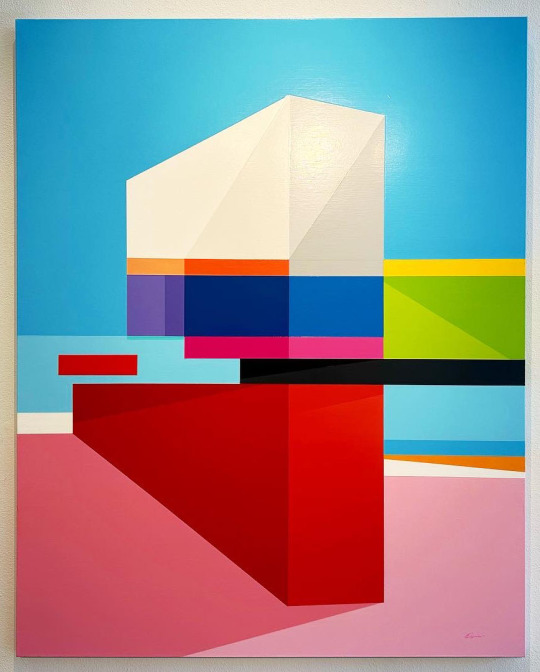
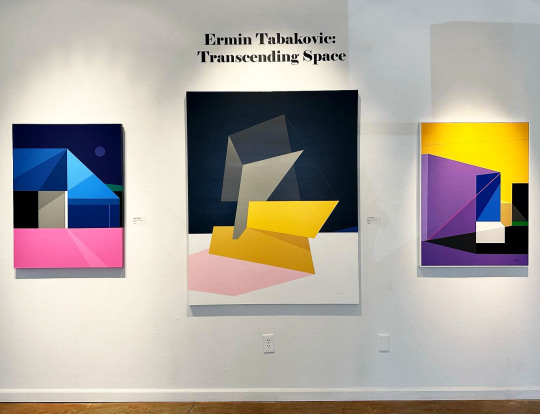
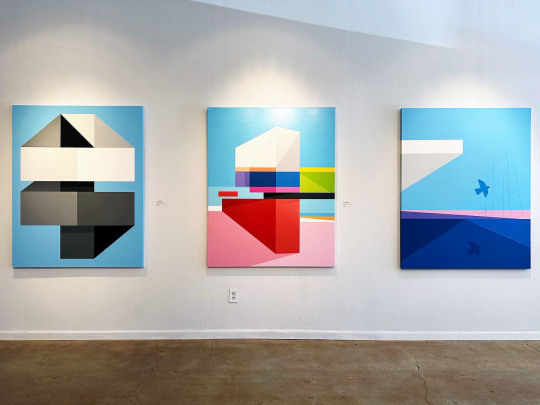
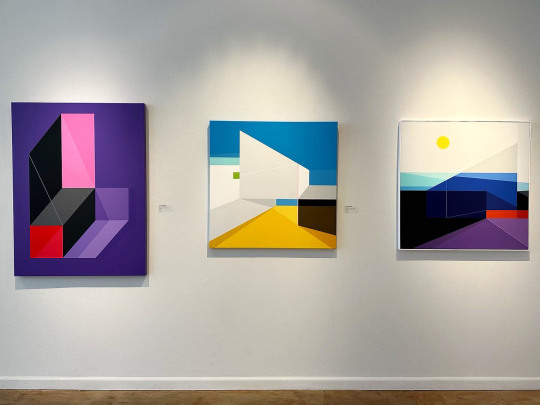
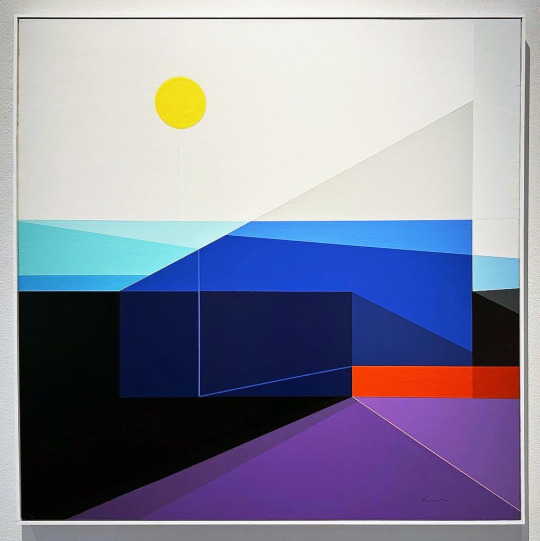
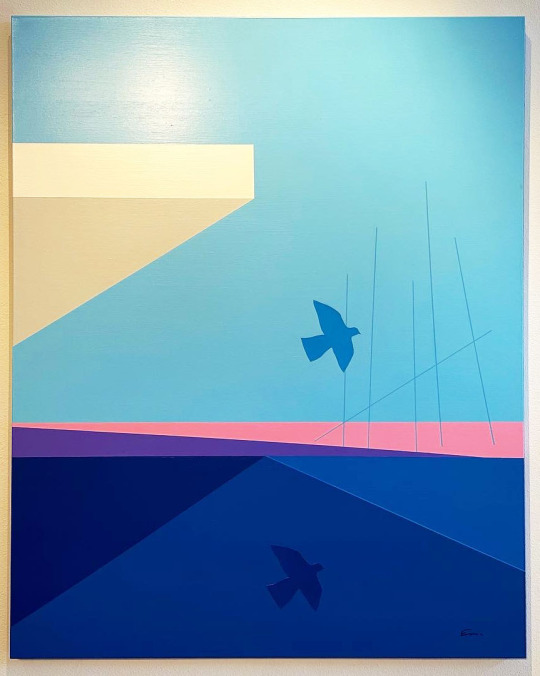
Ermin Tabakovic has created an intriguing world with his geometric paintings for Transcending Space, on view at Morean Arts Center in St. Pete.
From the gallery’s website-
Ermin Tabakovic was born in 1980 in former Yugoslavia (now Bosnia). In 1993 he and his family moved to Berlin, Germany where they lived between 1993-1998. As a teenager in Berlin, Ermin was involved in the city’s vibrant graffiti art scene and completed numerous murals. In 1998 he and his family emigrated to the United States, settling in the Tampa Bay area. Upon arrival in the US, Ermin took on painting and studied at St. Petersburg College where he focused on art and architecture. He went on to study art at the University of Central Florida in Orlando where he completed his BFA in Art Studio with Minors in Graphic Design and Art History.
Ermin actively exhibited his work between 2000-2008, taking part in many shows throughout Florida. He stopped painting in 2008 due to health issues and picked it up again in 2020 with a new vigor and a new vision. His new works are mature, colorful and bold representations of his core vision and aesthetic steeped in geometric form and a structural sensibility. Currently Ermin resides in Tampa with his wife Lisa and their beloved cat Maximus.
“Modern geometric painting has had a very big influence on my work, especially the Constructivist artists such as Malevich and El Lissitzky and the various other modern Art movements of the 20th century such as Cubism, Neoplasticism, Minimalism, and Surrealism. In my current work I tend to fuse all these different influences and combine them with my own personal aesthetic to create a new visual language that transcends the past and points to something new and different. We live in a digital age, so there is that digital touch to my compositions as well by using the hard-edge approach.
“I want the works to be visually striking, thus my use of vibrant colors, contrast, pure and robust geometric forms, clean lines, etc. I also like to add a surreal touch to my works to give them a sense of mystery and visual drama. Furthermore, I seek to create visual paradoxes by intertwining 2D and 3D space to add tension and ambiguity. My aim is to challenge the viewer’s perception of space and test the boundaries of what is possible by juxtaposing the seemingly impossible.”
This exhibition closes 10/26/23.
#Ermin Tabakovic#Morean Arts Center#Art#Art Shows#Florida Art Shows#Florida Artist#Florida Artists#Geometric Painting#Painting#St. Pete Art#St. Pete Art Gallery#St. Pete Art Shows
2 notes
·
View notes
Text
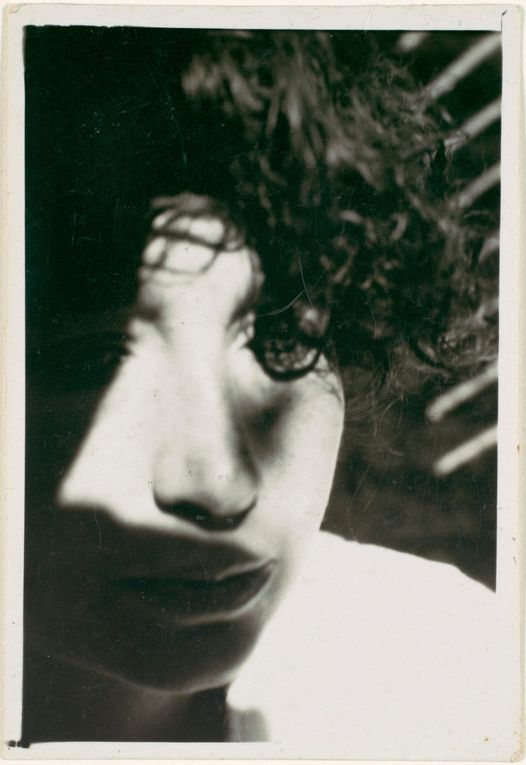
Lucia Moholy photographed by her husband Lazlo Moholy Nagy. Photo Lószló Moholy-Nagy/IMAGO /Artokoloro.
Lucia Moholy’s images are seen all around the world to this day – with her photographs of Bauhaus buildings, the photographer and journalist Lucia Moholy (1894–1989) left a lasting mark on the image of the art school. As the wife of László Moholy-Nagy, she lived with him at the Bauhaus and carried out important work for numerous Bauhaus artists as well as for the institution itself in his shadow. She played a crucial role in bringing the school’s artistic ideas and substance to the public.
The exhibition is devoted to the entire oeuvre of the artist: beside documentary photographs of workshop work and portrait series of Bauhaus teachers and friends, photographs of Bauhaus buildings in Dessau constitute the focal aspects of her work. Revolutionary in her approach, Lucia Moholy considered photography and painting to be of equal value; her architectural photographs emerge as constructivist images. Although Lucia Moholy was not employed at the Bauhaus, through her photographs she has contributed significantly to establishing the fame and reputation of the art school. It is the high quality of her photographs, owing much to Moholy’s adept handling of the technical aspects of photography, that enabled a hitherto unprecedented marketing of the Bauhaus idea as a social and, above all, aesthetic movement.
Lucia Moholy continues to be overshadowed by László Moholy-Nagy; in the exhibition, she is presented as an artist in her own right.
LUCIA MOHOLY – THE IMAGE OF MODERNITY
1 October 2022 -- 22 January 2023
https://www.broehan-museum.de/.../lucia-moholy-the-image.../
4 notes
·
View notes
Text
Lyudmila Mayakovskaya's flat in Lower Presnya, Moscow
Lyudmila Mayakovskaya was Vladimir Mayakovsky's older sister. I've never known about her, but she was actually a very interesting person. She graduated from the Stroganovsky Art Workshop and in 1910 came to work as an aerography artist at the Tryohkgornaya Textile Factory, soon becoming the head of the aerography department. For many years she was the only female head of department among a hundred of men.
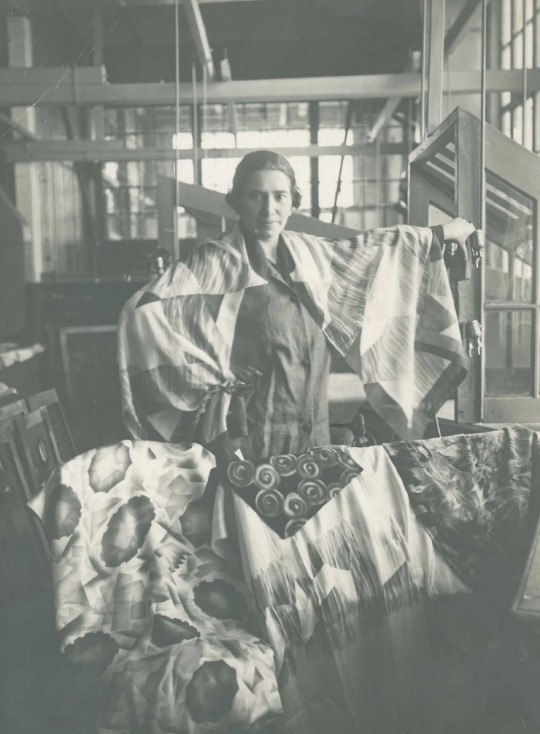
Almost since the first day Lyudmila started teaching other workers her process. In 1920 she joined the team of VHUTEMAS art academy and worked there until 1948. In her autobiography she wrote, "My students work in every textile factory of the USSR."
Thanks to her work and position, in 1927 she was able to buy her own 3-room flat in Lower Presnya where she lived with her sister and mother. Lyudmila was always involved with Vladimir's work as well, for example helping him make stencil copies of posters that he was creating. After his untimely death she was a vocal supporter of him and helped organize a museum. She donated the Presnya flat with all furniture and belongings to the museum after she passed away.
The flat is located in a very typical, no-nonsense 1920s house. For more than 50 years it was used as a museum office and only opened to the public in 2019. Althouth it's Lyudmila's flat, much of the exposition is understandably dedicated to Vladimir.

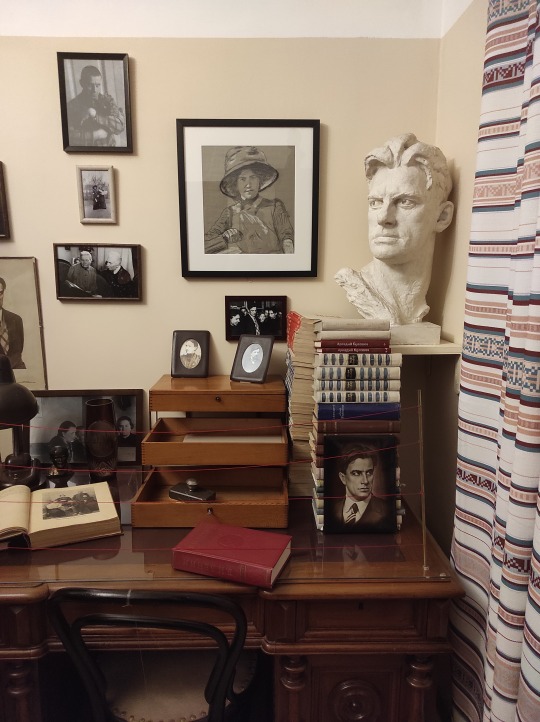

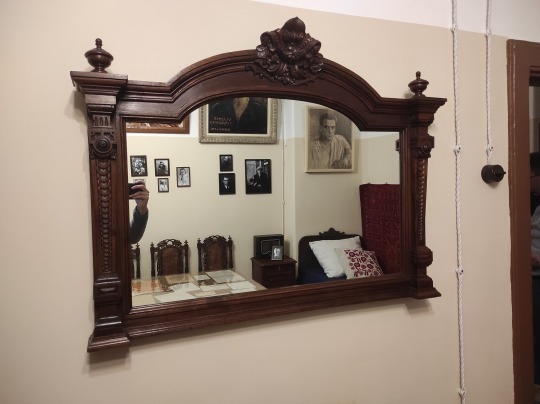
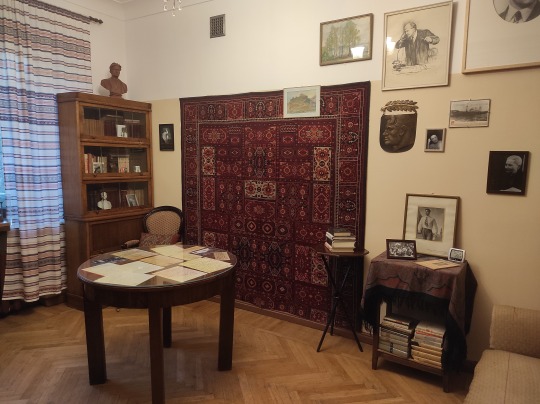
Vladimir paid for phone line being installed in the flat. This is the original phone from 1927.

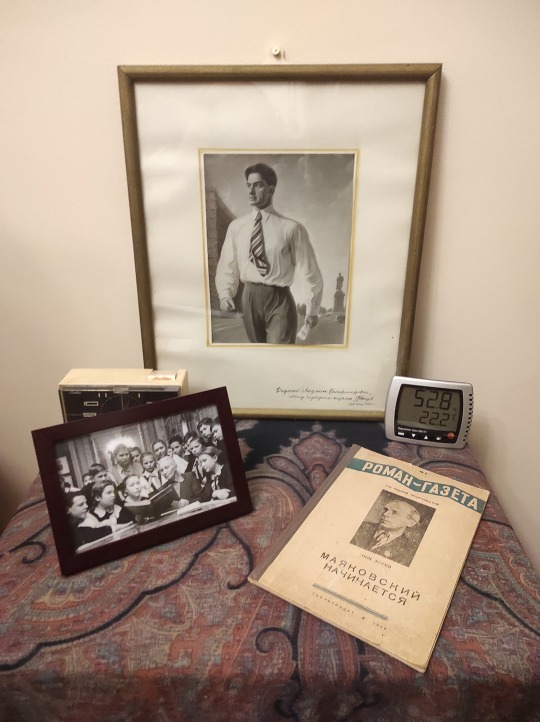
I wish more of the original items were saved, especially the kitchen and the bathroom. Still, it was very interesting to see a constructivist era flat with its unusual floor plan (at least two doors in every room for air flow), ice pantry, air ducts, turn-to-ring doorbell etc.
Part one - Architecture | Part two
102 notes
·
View notes